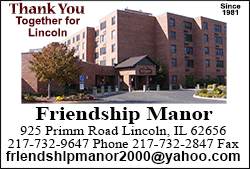|
 Is there a drug problem? Is there a drug problem?
The Chief says, “Yes, there is.”
According to Greenslate, there are rising problems with the use of
heroin in the community. His police force is well aware of it, and
officers are working daily to build solid cases that will result in
solid convictions.
In the last two years, the city has seen a rise in the use of
heroin, due in part to the fact that it is a readily available drug
that serves as an accessible and affordable substitute for another
dependency.
There has also been an increase in heroin-related deaths. In 2010,
there was one overdose death, in 2011 there was one. In 2012, there
were four reported heroin overdoses with two resulting in death. In
2013, there were five reported overdoses with no deaths resulting.
To date, in 2014 there have been four reported overdoses and one
death.
There have also been arrests made in connection with heroin use. In
2010 and 2011 there were no arrests made, but in 2012, there were
three, and in 2013, there were ten heroin-related arrests made in
Lincoln. To date in 2014 there have been two arrests made, but
Greenslate said there are cases being built, and more arrests will
be made in the future.

So, is there a specific cause for the rise in drug-related deaths?
Greenslate said there are a number of factors involved, but one
cause comes from the body’s growing dependency on the drug. He
explained that heroin in its purest form is cut with other
ingredients to weaken it. The pure form would be lethal, so the
“cutting” is necessary. Any number of ingredients can be used to
dilute the pure drug. Most often the dilutant will be talc, flour,
or powdered sugar. Dealers will use just about anything at their
disposal that is of a similar consistency to the pure heroin,
including certain rat poisons.
As an addict, one is not sure when they purchase a product how
potent it may be. Consequently, there are times when one “take”
doesn’t do the trick, and another is required. In addition,
Greenslate explained that as a user progresses in his or her habit,
the human body builds up a resistance to the drug, a natural defense
to the drugs affects. Therefore, it takes more and more each time in
order to reach that desired "feel good” feeling.
Then comes the day that the user has no access to his or her drug.
Greenslate said at times this can be by choice, someone trying to
“get clean” on their own. Other times it may be that they don’t have
the cash for, or immediate access to the drug. Either way the
consequences are severe illness. The illness wears on a person’s
resolve to quit, and in many cases within a day or two they are
looking for a “fix” to solve their problems.
However, what is also going on at the same time, is the body’s
natural defenses that created the original resistance are waning.
The body no longer has the ammunition to fight the effects of the
drug. When the user finally makes a purchase, they start by
consuming the same amount they were consuming previously, thinking
they will need that much to get high. Because they have taken that
same amount in the past, they don’t stop to think that it could be
fatal, when in fact it often is.
So how does the cycle of addiction get started? Greenslate said
there are multiple ways that one ends up addicted to an illegal
narcotic.
He recounted how the chain of drug abuse gets started in some cases,
but not always. He was careful to say that he was not making a
blanket accusation, but was offering information based on facts
about one possible scenario.

[to top of second column] |

In many cases, illegal drug abuse is the result of a
dependency on prescription drugs. Greenslate said heroin, which
is a derivative of poppy, shares its base narcotic with other
prescription drugs such as oxycotin. In some cases, those who
are dependent on a prescription drug such as oxycotin, reach a
point where they can no longer get the prescription. Because
oxycotin is addictive, and withdrawal symptoms include violent
or severe illness, those who “need” the drug, will then turn to
an illegal product such as heroin to offer an accessible and
affordable substitute. Greenslate said the reason heroin abuse
is growing now is because of a more careful monitoring system in the
medical and pharmaceutical fields.
People see their prescription drug dependency as acceptable because
the doctor prescribed the drug. But what happens is the longer they
take the drug, the more they need in order to feel good. This
results in a variety of actions by the addict. "“They go to the
doctor and say, "Oh I dropped my pills down the sink, can I get
more?" and they get a new prescription. Or they go to multiple
doctors and get multiple prescriptions.”"
Greenslate said that what has happened in recent years is that the
state has developed a monitoring system that alerts doctors and
pharmacies that one person is getting multiple prescriptions for one
drug. The result then is the addict is shut off from his or her
legal supply, and that leads to seeking out an illegal alternative.
Geographically, Lincoln is a hub city, which increases access to
drugs. Sitting between Chicago and St. Louis on the Interstate and a
thirty-minute drive to larger communities such as Springfield,
Decatur, and Bloomington, those seeking drugs seem to have unlimited
resources.
The problem grows when the one person seeking out the drugs, also
has to seek out a means of paying for the drugs. When one person
needs money to pay for the drugs, the best way to get it may be to
sell the same narcotic to others. It becomes a pyramid of sorts
Greenslate said, where that one will buy more than he or she needs
and sell part of it to others in order to raise money for his or her
next dose.

And, there is also a marketing strategy involved. Greenslate said,
“If you want to sell something, what is your best marketing tool?
Free samples.” The original addict will give drugs to one or more
persons, encourage them to start “using” and then sell them the
drugs when they have become addicted. Free sampling is one way that
youngsters get hooked because they are "easy sells."
Because of this, Greenslate said drug abuse is not limited to any
one age group or any one economic class. Greenslate said he wanted
to emphasize that not every person who needs a prescribed medication
is going to become an addict; this is just one scenario of how it
can come to a community.
So the next question becomes; how does one stop the cycle? For the
city department, there are a number of tools in their toolbox that
are effectively helping them combat the local war on drugs.
In segment two, Greenslate will talk about these tools, and the
success of the department in not only catching criminals, but also
in raising awareness and teaching prevention.
[By NILA SMITH] |